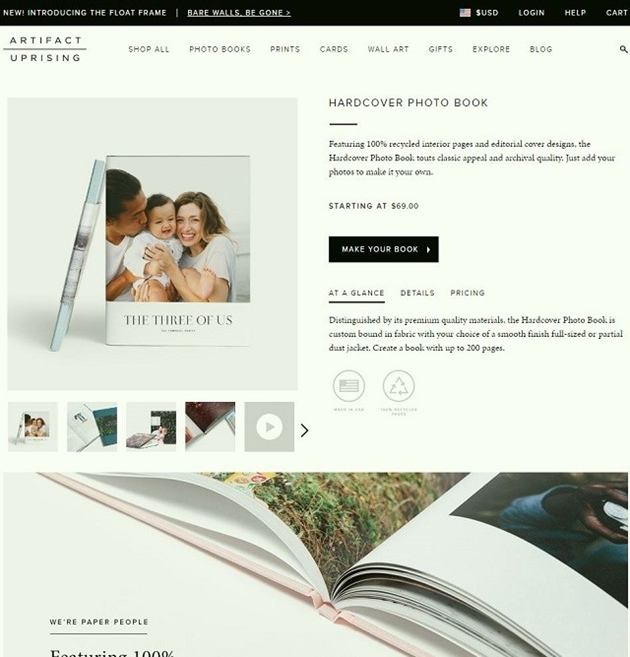
What’s your focus? Are you all about e-commerce, harnessing the Internet for most of your sales, and with an obligatory storefront? Or do people flock to your physical location, and your website points them there? The reason I ask is this: Where you make your sales informs your point-of-sale (POS) marketing.
If you type in “POS marketing” in Google, most of the search results focus on traditional, physical location POS. But, today, you can’t ignore e-commerce. If you do, you’re missing out on a big piece of pie.
The important thing is to optimize marketing for both e-commerce and traditional POS.
Let’s look at an industry where physical POS is typically the norm. The food industry immediately jumps to mind: People shop for groceries in stores, they dine out at restaurants. But according to Washington State University’s Carson College of Business, food e-commerce is taking off. A quarter of American adults have bought specialty foods online, and meal subscription startup Blue Apron has a $500 million valuation.
For an e-commerce startup, POS is entirely online, turning the traditional definition of POS on its head.
So, the business that optimizes POS marketing for both physical and digital stores will achieve the highest ROI. Let’s take a closer look.
Physical POS Marketing
In an article for MediaPost, Joseph Gelman and Marcus Koch make a fine point when they say, “Marketers should avoid the pitfall of selecting marketing programs based on what has worked in the past.” They recommend customizing POS marketing to each particular location, and aligning it with brand identity.
POS marketing is about every aspect of the shopper’s in-store experience, including layout, appearance, promotions, salespeople, and even the POS system itself. Great marketing will ensure customer don’t abandon their cart, that they potentially buy more than what they came for, and that they will come back because of a positive experience.
It’s important to understand shopper behavior when you’re optimizing in-store marketing. The University of Alabama Birmingham recommends using Big Data for small business. According to research from UAB’s Collat School of Business, data on customer preferences can help you boost sales and loyalty, and help tailor promotions for better results.
Supermarkets use customer data to determine the layout of the store. They segment demographics based on location, analyze data on location-based customer preferences, and then use analysis to determine how to organize the store. But analysis of this sort isn’t limited to the big guys. A program such as Canopy Labs can help predict customer behavior and sales trends.
You don’t have to have fancy software to do this. As Square points out, a POS system for small business has sales analytics to help you determine what’s working well and what isn’t. You can tailor promotions, sales team focus, and store setup to boost sales of low-performing products. You can also include email marketing to customers who volunteer their email address, basing your promotions, once more, on what’s doing well and what isn’t. You can also offer deals on what they like, if the customer is starting to drift and you want them back.
In-store marketing can readily take advantage of things like data and sales analytics; those aren’t just for e-commerce.
Now let’s consider the e-commerce side.
E-Commerce POS Marketing
In the e-commerce world, POS is called user experience (UX). That’s because people don’t think of the website as a physical space in which a sale is taking place. Granted, a website isn’t physical, but other than that how is there not a “point-of-sale” happening?
Users comes to your e-commerce site with the prospect of buying something. Along the way, the seriousness of their intent and their experience with the site determine whether they make the purchase.
Your external marketing efforts help influence seriousness of intent. But once those efforts lead people to your website, it’s about funneling them to a sale.
Doing so might be as simple as analyzing what you place “above the fold” of a Web page. Above the fold, originally a journalism term, is what the reader sees on the screen before they scroll down.
The content above the fold should…
- Tell the user what your brand, and by extension, your website, is all about
- Tell the user where they’re located on the website
- Show the user where to go now
The first thing the user sees should be a visually arresting representation of your brand. Don’t crowd it. Present the product, your brand name, and an easily navigable menu. Here’s an example from Artifact Uprising:

Note how you’re immediately drawn in by the visual. The brand message appears directly below the image. You know that Artifact Uprising prints photos from the simple, “Your photos, in print” message. And there’s a call to action right there next to the visual, so the user knows where to go if interested.
Once you’ve funneled them to product page, the visual quality continues, and there’s more descriptive content on what you’re offering—why it’s good, what its superior qualities are, what it costs, etc. All that is the equivalent of the salesperson’s pitch:

Once users click on the final call to action, the rest of the process must smoothly walk them through the purchase. Any hiccups, including slow loading times, could cause them to abandon their cart.
All in all, the entire e-commerce site is your point-of-sale, with branded pages, captivating images, concise messages, easy navigation, and accessible calls to action. Finally, digital payment must be up-to-date with options such as PayPal, member account, and one-time payment.
POS Marketing Gives Them What They Want
“The best way to make money in business is to not be in business to make money,” SEO specialist Robin Burton writes. Giving the customer what they want will make your POS marketing successful. Analyze your target audience’s buying trends, and customize your POS accordingly.
Your company’s product is what your audience wants and needs. Focus on making that value salient, and the product easily accessible. It will sell itself.
Join over 600,000 marketing professionals, and gain access to thousands of marketing resources! Don’t worry … it’s FREE!
